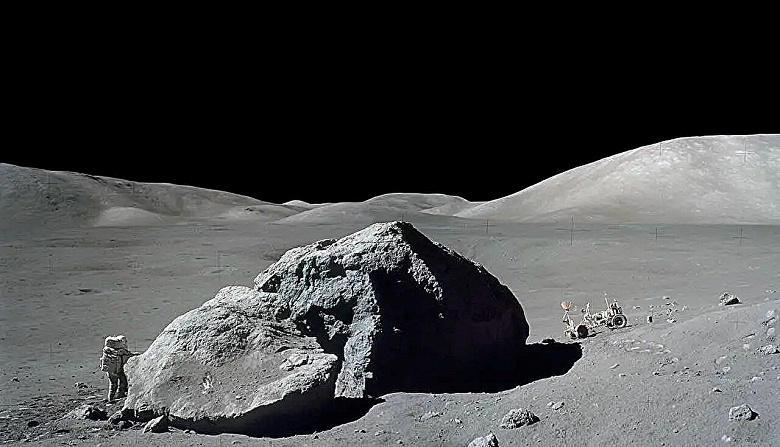The process of formation of high-titanium basalts becomes clear
The rocks on the Moon are unique in their diversity, composition and age, making them valuable for scientific research. They allow scientists to study the geological history of the Moon, understand the formation of planetary bodies in the Solar System, and obtain untouchable data on the structure and composition of rocks. Recent research in lunar geology has brought new knowledge about the processes underlying the formation of lunar rock.
Through the use of high-temperature laboratory experiments and sophisticated isotopic analyzes of lunar samples, researchers have successfully resolved a key step in the formation of a unique type of rock on the Moon.
The study of lunar rocks is important for expanding our knowledge of the solar system, planning space missions and developing new technologies. They provide valuable materials for scientific and applied research and help us better understand the past, present and future of the Moon and other astronomical objects.
Rocks on the Moon have a number of unique characteristics that make them special and interesting to scientists. Firstly, the variety of lunar rocks includes various types, from basalts formed during volcanic activity to craters and blocks formed during meteorite impacts. This diversity of rocks makes it possible to study different aspects of the geological history of the Moon and helps to paint a more complete picture of its evolution. Secondly, the composition of lunar rocks shows differences from terrestrial rocks. They have a specific set of chemical elements and isotopic fingerprints that may differ from rocks on Earth. Studying these differences allows scientists to understand the formation of the Moon and establish correspondence between its geological history and missions aimed at studying other astronomical objects. Third, lunar rocks provide evidence of the early history of the solar system. They are more than 4 billion years old, so they are valuable in understanding the processes that took place in the young Solar System. The study of lunar rocks gives scientists the opportunity to trace the evolution of planetary bodies and the development of galactic systems. Fourth, lunar rocks are preserved in a relatively intact state, due to the absence of an air atmosphere and moisture on the surface of the Moon. This means that scientists receive accurate data on the structure and composition of rocks, which gives them the opportunity to conduct more detailed and accurate analyzes and experiments. Finally, lunar rocks are rare and valuable materials for research. They make it possible to learn about the processes that occurred in the past on the Moon, as well as shed light on the formation of other planets and satellites in the solar system. Therefore, the study of lunar rocks is important for both basic scientific research and practical applications in future space missions and space exploration.
Quoting Tim Elliott, professor of geological sciences at the University of Bristol, co-author of the study: «The origin of volcanic lunar rocks — it's a fascinating story involving unstable crystalline clusters formed when a primordial lava ocean cooled. To fully understand this story, it was necessary to explain the presence of a unique type of magma on the Moon. However, explaining how these magmas were able to reach the lunar surface and be detected by space missions has long been a challenge. We are glad that we were finally able to overcome this issue».
The study determined that this reaction, which occurred about three and a half billion years ago in the deep layers of the lunar surface, involved the exchange of iron in the magma with magnesium in the surrounding rocks. Thus, this reaction introduced changes in the chemical and physical composition of the melt, which explains the characteristics of lunar rocks.
As Dr. Martijn Claver, a researcher at the Institute of Mineralogy at the University of Münster, noted: “Until recently, we have not been able to reproduce the magmatic composition that corresponds to the necessary chemical and physical characteristics of high-titanium basalts. It was especially difficult to explain their low density, which allowed them to erupt about three and a half billion years ago. However, thanks to high-temperature experiments carried out in the laboratory, scientists were able to simulate high-titanium basalts and identify their characteristic isotopic composition, which turned out to be a reflection of the reactions carried out in the experiments.
As a result, it turned out that the interaction between the melt and the solid phase is a key factor in the formation of unique magmas of lunar rock. They help better understand one of the Moon's major geological mysteries and represent an important step in exploring its unique history.

